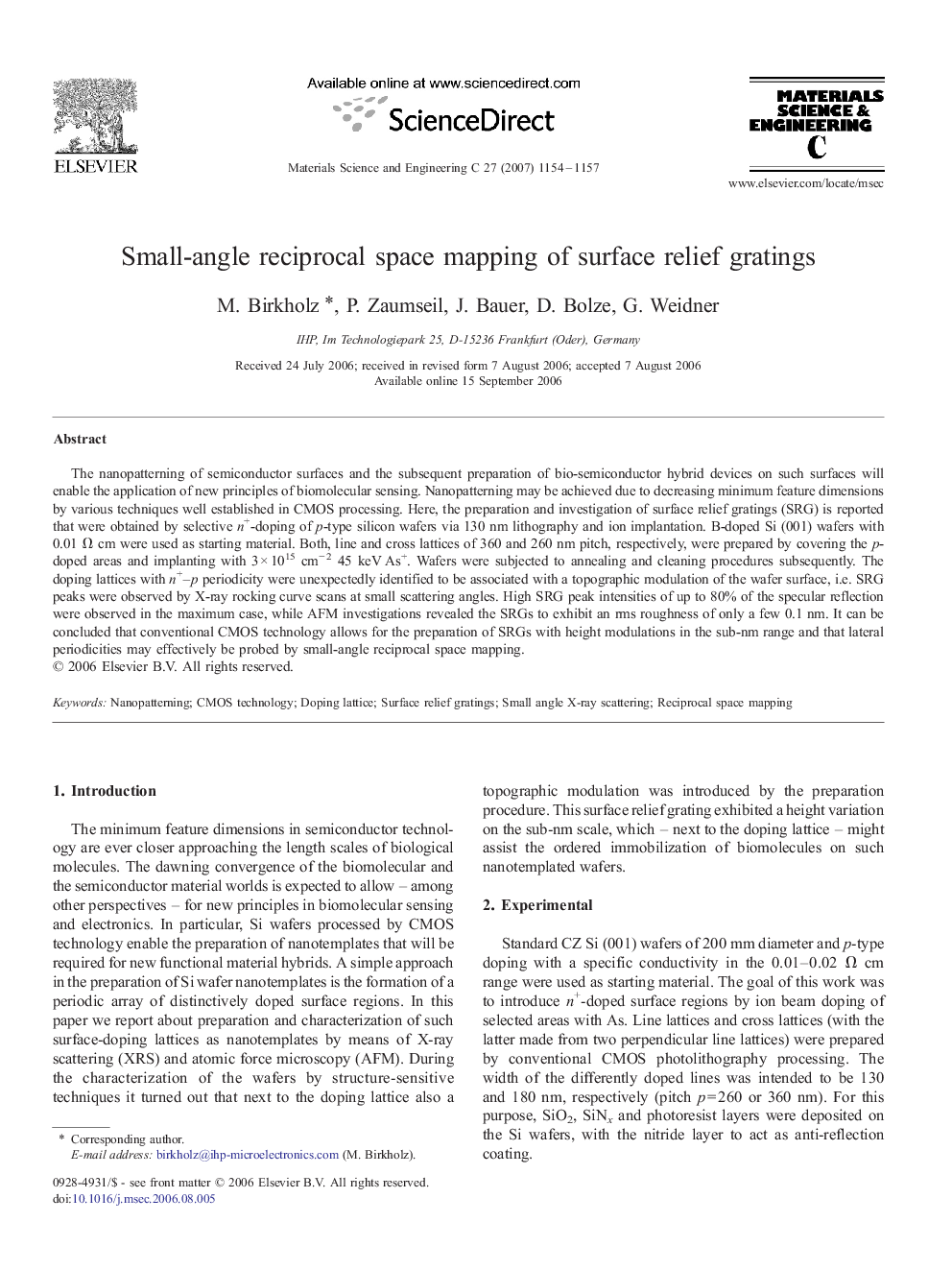| Article ID | Journal | Published Year | Pages | File Type |
|---|---|---|---|---|
| 7870793 | Materials Science and Engineering: C | 2007 | 4 Pages |
Abstract
The nanopatterning of semiconductor surfaces and the subsequent preparation of bio-semiconductor hybrid devices on such surfaces will enable the application of new principles of biomolecular sensing. Nanopatterning may be achieved due to decreasing minimum feature dimensions by various techniques well established in CMOS processing. Here, the preparation and investigation of surface relief gratings (SRG) is reported that were obtained by selective n+-doping of p-type silicon wafers via 130 nm lithography and ion implantation. B-doped Si (001) wafers with 0.01 Ω cm were used as starting material. Both, line and cross lattices of 360 and 260 nm pitch, respectively, were prepared by covering the p-doped areas and implanting with 3 Ã 1015 cmâ 2 45 keV As+. Wafers were subjected to annealing and cleaning procedures subsequently. The doping lattices with n+-p periodicity were unexpectedly identified to be associated with a topographic modulation of the wafer surface, i.e. SRG peaks were observed by X-ray rocking curve scans at small scattering angles. High SRG peak intensities of up to 80% of the specular reflection were observed in the maximum case, while AFM investigations revealed the SRGs to exhibit an rms roughness of only a few 0.1 nm. It can be concluded that conventional CMOS technology allows for the preparation of SRGs with height modulations in the sub-nm range and that lateral periodicities may effectively be probed by small-angle reciprocal space mapping.
Keywords
Related Topics
Physical Sciences and Engineering
Materials Science
Biomaterials
Authors
M. Birkholz, P. Zaumseil, J. Bauer, D. Bolze, G. Weidner,
